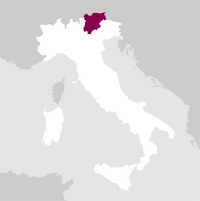詳細資訊

顏色

味道
服務於:
10 - 12 °C.
長壽:
05 - 10 years

搭配
Pasta
Fish
Shellfish
Cheese
Poultry
Spicy food
製造商
Konrad Oberhofer
來自這個酒莊
Konrad Oberhofer was born in 1906 into a family that had long been involved in agriculture and the wine trade. His father produced and sold wine successfully.
As was customary in the time around 1900, it was mainly red wine from the local grape variety Vernatsch. It was exported mostly to countries north of the Alps, where it enjoyed good reputation, especially at the imperial court in Vienna, where it was drunk abundantly.
Today Vernatsch plays only a secondary role in South Tyrol. Among the red wines, the native Lagrein and the noble Pinot Noir varieties now set the tone. Among the white wines, the varieties Gewürztraminer, Weissburgunder (Pinot Blanc), Sauvignon and Müller Thurgau take the lead.
The local wines continue to be cultivated in the vineyard and vinified in the cellar with the high quality standards introduced by Konrad Oberhofer. 閱讀更多
As was customary in the time around 1900, it was mainly red wine from the local grape variety Vernatsch. It was exported mostly to countries north of the Alps, where it enjoyed good reputation, especially at the imperial court in Vienna, where it was drunk abundantly.
Today Vernatsch plays only a secondary role in South Tyrol. Among the red wines, the native Lagrein and the noble Pinot Noir varieties now set the tone. Among the white wines, the varieties Gewürztraminer, Weissburgunder (Pinot Blanc), Sauvignon and Müller Thurgau take the lead.
The local wines continue to be cultivated in the vineyard and vinified in the cellar with the high quality standards introduced by Konrad Oberhofer. 閱讀更多


| 名称 | Konrad Oberhofer Sudtirol Riesling 2022 |
|---|---|
| 类型 | White still semi-aromatic |
| 葡萄酒名称 | Alto Adige DOC |
| 年份 | 2022 |
| 容量 | 0,75 l |
| 酒精度 | 12.5% 按體積 |
| 葡萄品种 | 100% Riesling |
| 国家 | Italy |
| 产地 | Trentino Alto Adige |
| 供应商 | Konrad Oberhofer |
| 故事 | Riesling originates in Germany, along the Rhine River. Since the second half of the nineteenth century, this noble grape variety has also been successfully cultivated in Alto Adige. |
| 土壤成分 | Conglomerate of clay, limestone and porphyry. |
| 酿酒工艺 | The grapes are lightly crushed and the must is left in contact with the grape skins for about eight hours to enhance fruitiness. After a gentle pressing and natural sedimentation, the wine ferments under controlled temperatures. |




